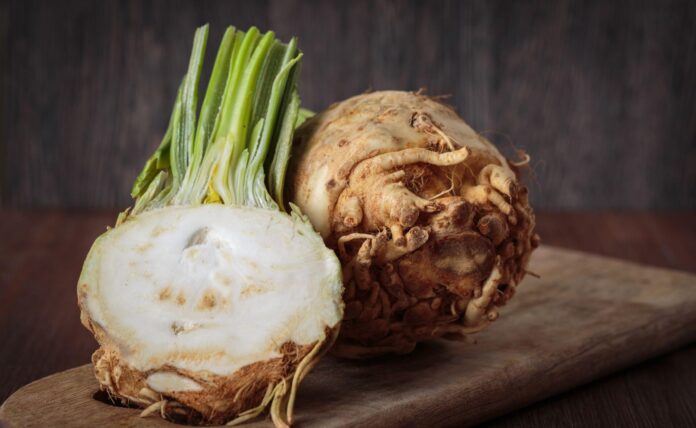
As the leaves turn and the air chills, the cozy season ushers in a bounty of root vegetables. Among them, celeriac stands out, not just for its distinctive flavor but for its powerhouse of health benefits. Often overshadowed by its more familiar cousins like carrots and potatoes, celeriac, or celery root, is a treasure trove of nutrients that promises to boost your health in myriad ways.
What Exactly Is Celeriac?
Celeriac, scientifically known as Apium graveolens var. rapaceum, is a root vegetable closely related to celery, parsnips, and parsley. Unlike the celery stalks familiar in snacks and stews, celeriac is cultivated for its bulbous root. Featuring a rough, knobby exterior, it reveals a crisp, white interior that boasts a taste reminiscent of celery and parsley with a comforting earthiness.
Top Health Benefits of Celeriac
- Immune System Boost: Rich in vitamins C and E, celeriac is packed with antioxidants that help combat inflammation and protect against various diseases.
- Heart Health: With nutrients like potassium and vitamin K, celeriac contributes to a healthy heart by managing blood pressure and improving cholesterol levels.
- Enhances Gut Health: A good source of both soluble and insoluble fiber, celeriac supports the digestive system and promotes a healthy gut microbiome.
- Bone Strength: Minerals such as calcium and phosphorus in celeriac help maintain strong bones and prevent conditions like osteoporosis.
- Metabolic Benefits: Especially beneficial for those with metabolic concerns, celeriac’s low carbohydrate content helps manage blood sugar levels.
- B Vitamin Rich: It is also a great source of B vitamins which are crucial for energy metabolism and overall vitality.
Creative Ways to Use Celeriac in Your Kitchen
Celeriac’s versatility makes it an excellent addition to your culinary repertoire. Whether raw in a crunchy salad or cooked in a comforting stew, it adapts beautifully to various dishes. For a touch of gourmet, try incorporating it into French celeri remoulade or simply roast it to enhance its subtle flavors.
Shopping and Storage Tips for Celeriac
When selecting celeriac, look for medium-sized, firm bulbs. Avoid those that are discolored or have soft spots. Store it in your refrigerator’s vegetable drawer where it can stay fresh for up to a month, or in a cool, dry place for a slightly shorter shelf life.
Join the Celeriac Conversation
This autumn, broaden your vegetable horizon by giving celeriac a spot in your pantry. Its unique flavor and impressive health benefits make it a must-try this season. Have you experimented with celeriac in your recipes? Share your experiences and favorite dishes in the comments below, and don’t forget to explore more health-centric articles and subscribe to our newsletter for the latest tips and trends.
Subscribe to our newsletter for more exciting health tips and recipes.










